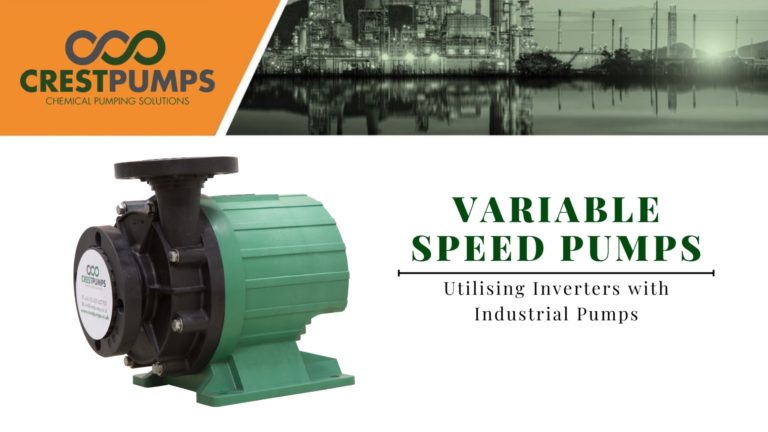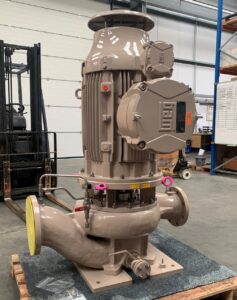Crest Pumps: Utilising Inverters with Industrial Pumps

Utilising Inverters with Industrial Pumps. (Image source: Crest Pumps)
Often, customers ask for a pump to achieve multiple duty points. Which are usually seen as minimum, normal or maximum flow rates with corresponding calculated heads. This can make it quite tricky to efficiently select a centrifugal pump. (As a fixed speed curve will increase flow whilst decreasing generated head). In reality the pump may rarely see the maximum duty point resulting in very rarely running at the BEP (Best efficiency point). Generally speaking as the flow rate requirement in a system increases, so does the friction loss. The system can switch for a static domination system, to a friction dominated system for higher flow rates. (Unless, the system has been installed with over-sized pipework to accommodate high flow rates).
Variable Pumps Speeds
There seems to a be a habit in the industry to size the pump to be able to achieve the maximum duty point, with the pump running left of curve for normal and minimum flow rates. This can lead to reduced service life and eventual premature failure. To achieve the lower flow rates, the pump has to be "throttled back" with an actuator or valve to walk it back on its curve. Leading to unnecessary energy consumption, as the pressure required to force past the partially closed valve or, the generated head above the required system head is all wasted energy.
Using an inverter is an energy efficient way of achieving multiple duty points with a centrifugal pump. Also resulting in the running speed reducing. It is generally appropriate to reduce pump running speed to 30Hz without the need for additional forced ventilation.
Although running left of the curve uses less power with centrifugal pumps, it's still higher than it would be if the pump speed had reduced to provide same flow rate at the system head. Meaning, to throttle the pump back you need no artificial head. It will serve to reduce frictional wear on the pump and valves, as well as increasing bearing life too.
Remember ...
... For a reduction of 10% in speed and flow, will give a 33% reduction in energy consumption. See our other articles on pump affinity laws for more information. Inverters can also provide various types of motor and pump protection features. For example, overcurrent protection and dry-run protection.
Source: Crest Pumps Ltd







